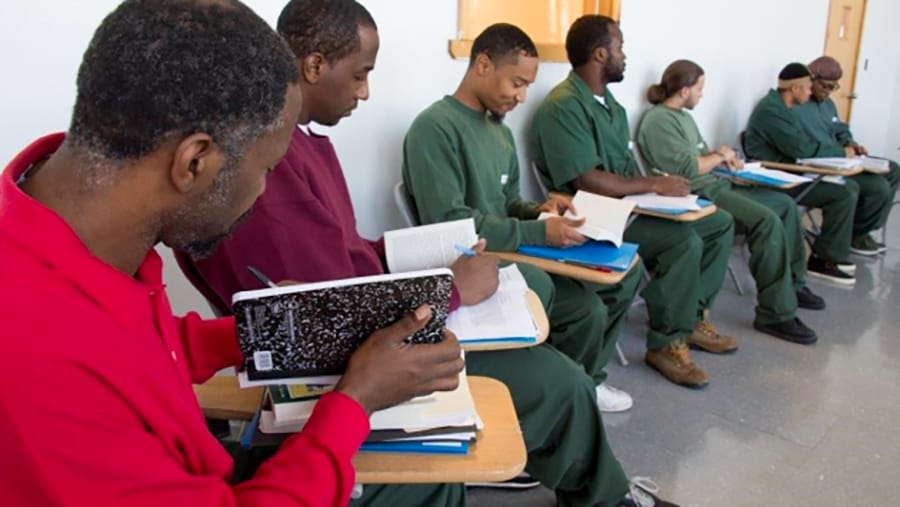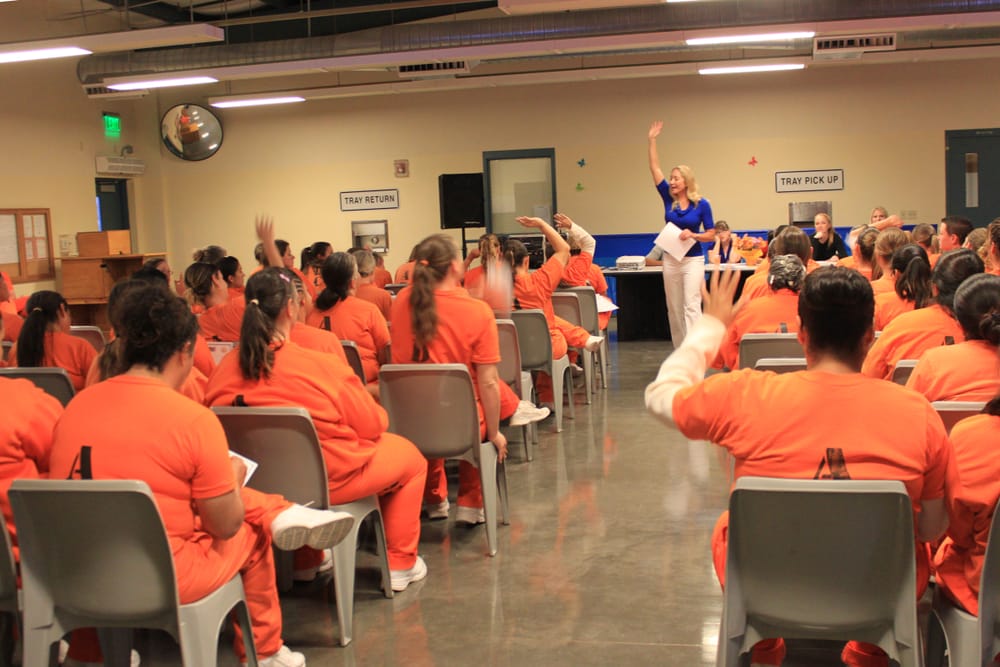The Importance of Education for Prisoners

Incarcerated individuals who pursue educational opportunities while incarcerated set themselves up for a better life once released. As the U.S. prison population remains the highest in the world and as recidivism continues to be a serious impediment to effective criminal justice and public safety, now couldn’t be a better time to implement educational programs in prison.
Inmates Who Receive Educational Courses in Prison are Less Likely to Return to a Life of Crime
According to federal data, prison education program participants were 43% less likely to return to a life of crime once released. Further, prisoners who take part in educational programs while incarcerated have employment rates 13% higher than those who do not participate. Education supports an incarcerated individual’s successful reentry into society while at the same time strengthening public safety.1
The Benefits of Education for Prisoners

Image courtesy of doccs.ny.gov
A significant percentage of crimes are committed out of necessity by individuals who feel that engaging in an illegal act is their best option for meeting a core need. Such calculations are erroneous because stealing something to obtain money for food, housing, drugs, or other perceived or real necessities inevitably puts the individual in an even worse situation via incarceration.2
However, accessing educational resources, expanding one’s knowledge, and learning valuable skills support an individual with tools they can use to find more positive means of meeting their needs. Educational programs provide benefits to the incarcerated, including the following.3
As mentioned earlier, accessing educational services is directly linked to decreased recidivism. The higher the educational program one pursues while incarcerated, the less likely they are to recidivate. While the average recidivism rate in the U.S. hovers around 67%, just 14% of inmates who obtain an Associate’s Degree recidivate, and just 5% after obtaining a Bachelor’s Degree.

Obtaining and retaining gainful employment is a defining feature of reentry into society, so important in fact, it is the most reliable metric by which one can determine whether or not a formerly incarcerated person will make it in the civilian world or if they will return to a life of crime. Critically, formerly incarcerated people are much more likely to secure and retain gainful employment if they take educational courses while in prison.
Prison education is more effective than prison itself. For every $1 million invested in prison facilities, about 350 crimes are prevented. But for every $1 million invested in prison education programs, about 650 crimes are prevented.
Even for those serving life sentences, educational programs in prison provide core benefits. For example, there is a substantial reduction in violent behavior among prisoners who are involved in prison education. A case study in an Indiana prison found that incarcerated people enrolled in educational courses at the prison committed 75% fewer infractions than incarcerated people at the same prison who were not enrolled in such courses.
Reforms on the Federal Level Improve Access to Education
Over the last several years, the Federal Bureau of Prisons (BOP) has implemented reform strategies to increase education access for those incarcerated in federal prisons. One report from BOP showed that, for every dollar spent on prison education, four to five dollars are saved in the costs of re-incarcerating former offenders simply because educational services are very effective in reducing recidivism.4
One federal prison reform launched in 2016 involved implementing a semi-autonomous “school district” in federal prisons. The program offers adult literacy basic skills, high school diplomas, post-secondary education, and expanded opportunities for individuals with learning disabilities. Under the program, each federal inmate, upon incarceration, undergoes an assessment to determine their educational level and instructional needs. An individualized education plan is created for them from that assessment, a plan the inmate follows throughout their time in BOP’s custody.
Another federal program launched in 2017 sought to provide inmates with a blended education model that included classroom instruction and online education. The online portion of the model involved inmates being provided with tablets customized for a prison environment. When the program was launched, preliminary pilot efforts showed great promise in federal prisons in Ohio and California. Much like the semi-autonomous school district model, this blended education model has effectively provided offenders with more educational opportunities (and especially customizable educational opportunities, which have proven to be quite important to offenders).
“Prison education programs reduce recidivism rates and create meaningful opportunities for redemption and rehabilitation that improve lives, strengthen communities, and reflect America’s ideal as a nation of second chances and limitless possibilities.”
More recently, the U.S. Department of Education (ED) released a 2023 statement saying it would expand federal Pell Grant access for incarcerated individuals. Such would allow prisoners (who have little to no income) to pay for post-secondary courses through the Pell Grant system. To that point, U.S. Secretary of Education Miguel Cardona said, “Prison education programs reduce recidivism rates and create meaningful opportunities for redemption and rehabilitation that improve lives, strengthen communities, and reflect America’s ideal as a nation of second chances and limitless possibilities.” The Secretary went on to say that the decision to make Pell Grants available to the incarcerated will “…help over 760,000 individuals who are currently incarcerated pursue degrees, credentials, and skills that set them up for success and lead to brighter futures.”
The Need for Educational Programs in All Prisons

Photo by Rebekah Zemansky/Shutterstock.com
While major steps have been taken toward providing educational opportunities to federal prisoners, the fact remains that most American prisoners are held in state prisons and jails, not federal penitentiaries. Different states have different laws governing the implementation of educational programs inside their prisons, meaning one may have very different access to educational services depending on the state they’re incarcerated in.
States should implement results-based, effective, and universally implementable educational programs in their prisons. Doing so will make prisoners more peaceful, improve the lives of the incarcerated, and make communities healthier and safer.
Sources:
- ED. “U.S. Department of Education to Launch Application Process to Expand Federal Pell Grant Access for Individuals Who Are Confined or Incarcerated.” U.S. Department of Education, 2023. ed.gov
- PT. “Law and Crime.” Psychology Today, 2023. psychologytoday.com
- Northwestern. “Benefits of Prison Education.” Northwestern University, 2023. sites.northwestern.edu
- DOJ. “Prison Reform: Reducing Recidivism by Strengthening the Federal Bureau of Prisons.” U.S. Department of Justice, 2023. justice.gov




